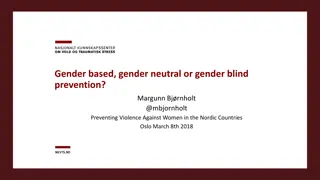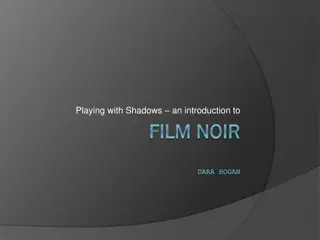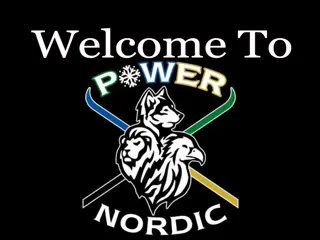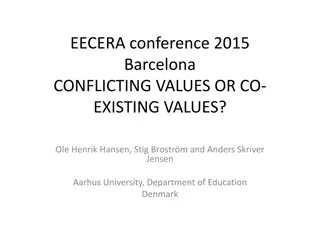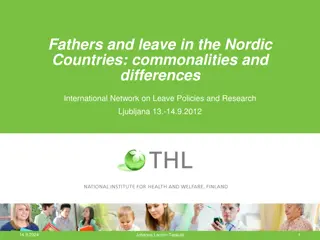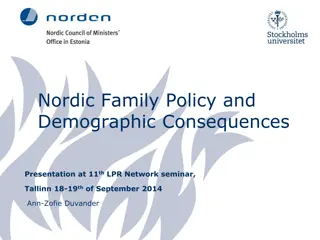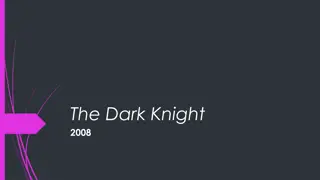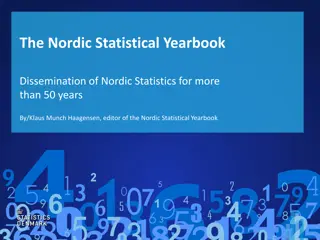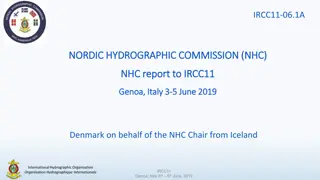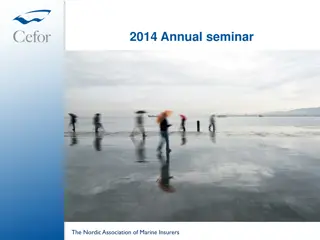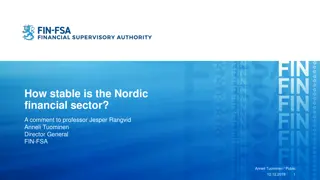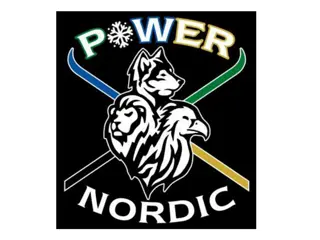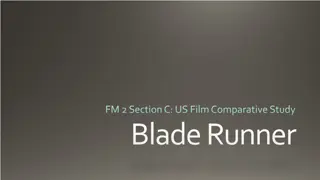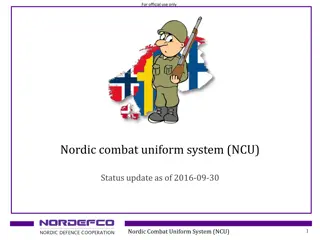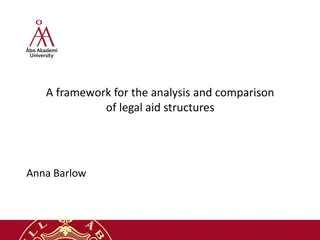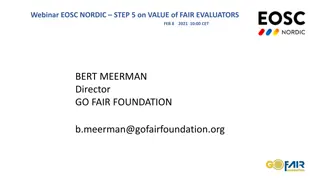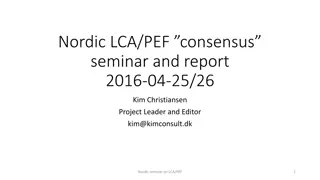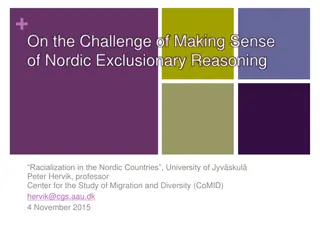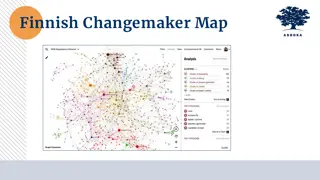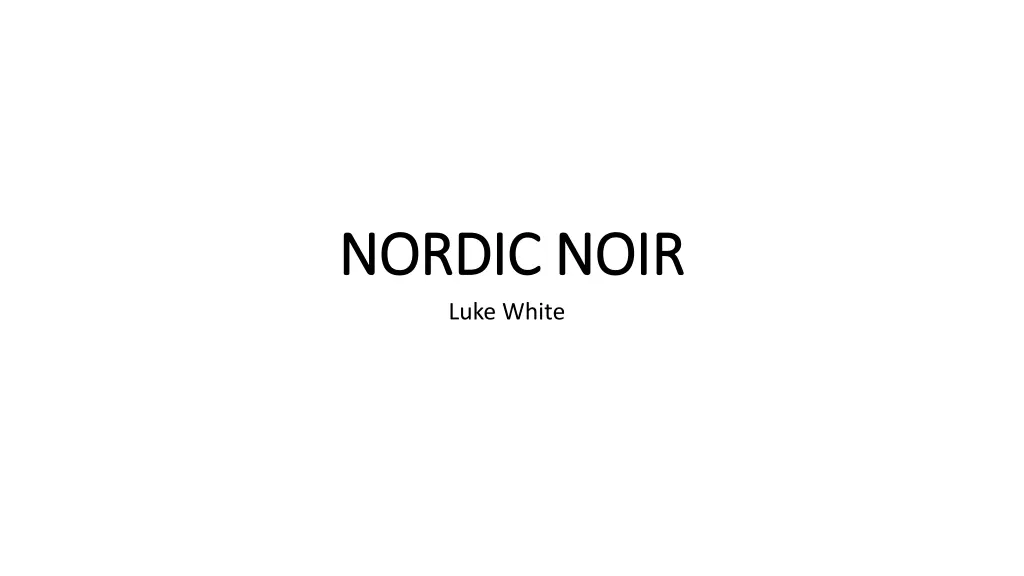
Unveiling the Intriguing World of Nordic Noir Crime Fiction
Delve into the captivating genre of Nordic noir, characterized by its dark and morally complex themes depicted in bleak landscapes. Explore the origins, distinctive features, and notable novels that have made Nordic noir a compelling and popular storytelling style.
Download Presentation

Please find below an Image/Link to download the presentation.
The content on the website is provided AS IS for your information and personal use only. It may not be sold, licensed, or shared on other websites without obtaining consent from the author. If you encounter any issues during the download, it is possible that the publisher has removed the file from their server.
You are allowed to download the files provided on this website for personal or commercial use, subject to the condition that they are used lawfully. All files are the property of their respective owners.
The content on the website is provided AS IS for your information and personal use only. It may not be sold, licensed, or shared on other websites without obtaining consent from the author.
E N D
Presentation Transcript
NORDIC NOIR NORDIC NOIR Luke White
Overview Overview Nordic noir, also known as Scandinavian noir or is a genre of crime fiction usually written from a police point of view and set in Scandinavia or Nordic countries. Plain language avoiding metaphor and set in bleak landscapes results in a dark and morally complex mood, depicting a tension between the apparently still and bland social surface and the murder, misogyny, rape, and racism it depicts as lying underneath. It contrasts with the whodunit style such as the English country house murder mystery. The popularity of Nordic noir has extended to the screen, such as The Killing, The Bridge, Trapped,and Bordertown.
Features Features Some critics attribute the genre's success to a distinctive and appealing style, "realistic, simple and precise... and stripped of unnecessary words". Their protagonists are typically morose detectives or ones worn down by cares and far from simply heroic. In this way, the protagonists' lives cast a light on the flaws of society, which are beyond the crime itself. This is associated with how this genre often tackles a murder mystery that is linked with several storylines and themes such as the investigation of the dark underbelly of modern society. This is demonstrated in the case of the Insomnia films, which featured crime-solving linked to the decline of the Nordic welfare state. A description of Nordic noir cited that it is typified by a dimly lit aesthetic, matched by a slow and melancholic pace, as well as multi-layered storylines. It often features a mix of bleak naturalism and disconsolate locations, with a focus on the sense of place where bad things can happen. These were the distinguishing emotions of the series Bordertown, which were further combined with an atmosphere arising from the fear of Russia. The works also owe something to Scandinavia's political system where the apparent equality, social justice, and liberalism of the Nordic model is seen to cover up dark secrets and hidden hatreds. Stieg Larsson's Millennium trilogy, for example, deals with misogyny and rape, while Henning Mankell's Faceless Killers focuses on Sweden's failure to integrate its immigrant population.
Novels Novels There are differing views on the origins but most commentators agree that the genre had become well established as a literary genre by the 1990s; Swedish writer Henning Mankell, who has sometimes been referred to as "the father of Nordic noir", notes that the Martin Beck series of novels by Maj Sj wall and Per Wahl "broke with the previous trends in crime fiction" and pioneered a new style: "They were influenced and inspired by the American writer Ed McBain. They realized that there was a huge unexplored territory in which crime novels could form the framework for stories containing social criticism. Kerstin Bergman notes that "what made Sj wall and Wahl 's novels stand out from previous crime fiction and what made it so influential in the following decades was, above all, the conscious inclusion of a critical perspective on Swedish society. Henning Mankell's books on "Kurt Wallander" made the genre a mass phenomenon in the 1990s. Norwegian author Karin Fossum's books on "Inspector Sejer" were also highly influential and widely translated. British author Barry Forshaw suggested that Peter H eg's atmospheric novel Miss Smilla's Feeling for Snow was "massively influential" as the true progenitor of the "Scandinavian New Wave" and, by setting its counter-intuitive heroine in Copenhagen and Greenland, that it inaugurated the current Scandinavian crime writing wave. One critic opines, "Nordic crime fiction carries a more respectable cachet than similar genre fiction produced in Britain or the US". Language, heroes and settings are three commonalities in the genre, which features plain, direct writing style without metaphor.The novels are often police procedural, focusing on the monotonous, day-to-day work of police, often involving the simultaneous investigation of several crimes. Examples include The Girl with the Dragon Tattoo and its sequels by Stieg Larsson, Henning Mankell's Kurt Wallander detective series, and Maj Sj wall and Per Wahl s Martin Beck novels.
Examples of Nordic Noir Novels Examples of Nordic Noir Novels The Girl with the Dragon Tattoo Stieg Larsson The Snowman Jo Nesbo Miss Smilla s Feeling for Snow Peter Hoeg Faceless Killers Henning Mankell The Ice Princess Camilla Lackberg The Darkness Ragnar Jonasson The Chestnut Man Soren Sveistrup Roseanna Maj Sjowall
Television + Film Television + Film The term "nordic noir" is also applied to films and television series in this genre, both adaptations of novels and original screenplays. Notable examples are The Killing, The Bridge, Trapped, Bordertown and Marcella. Critic Boyd Tonkin has suggested that the British but heavily Scandinavian-influenced Shetland Isles and Outer Hebrides have produced authors in an allied, if not precisely identical tradition. Exponents include Ann Cleeves, whose Shetland books have been adapted for television, and Peter May's Lewis Trilogy. The relatively slower narrative pace of UK crime dramas Broadchurch, The Missing and River is also credited to a "Scandinavian noir" influence. Subtitled original programmes have proven more popular with British audiences. International adaptations such as Sky Television's French/British The Tunnel (adapted from the Swedish/Danish The Bridge) have their own identity whilst retaining a stylistic and thematic affinity with the original series. While American cinema brought the English language movie version of The Girl With the Dragon Tattoo to a worldwide audience, receiving plaudits and was a box-office success, American adaptations such as The Killing have fared less well critically and have proven less popular in terms of audience reaction than original productions, an example being the enduring interest in Arne Dahl's Intercrime series, originally titled The A Team, and its TV adaptations.
Examples of Nordic Noir Television Examples of Nordic Noir Television The Bridge (2011) The Killing (2007) The Killing US (2011) Trapped (2015) Bordertown (2016) Marcella (2016) Fortitude (2015) Wallander (2008) The Valhalla Murders (2019)
Examples of Nordic Noir Films Examples of Nordic Noir Films The Girl with the Dragon Tattoo (2011) Jar City (2006) In Order of Disappearance (2014) The Keeper of Lost Causes (2013) Insomnia (1997) The Hunt (2012) Headhunters (2011) Pusher (1996)

